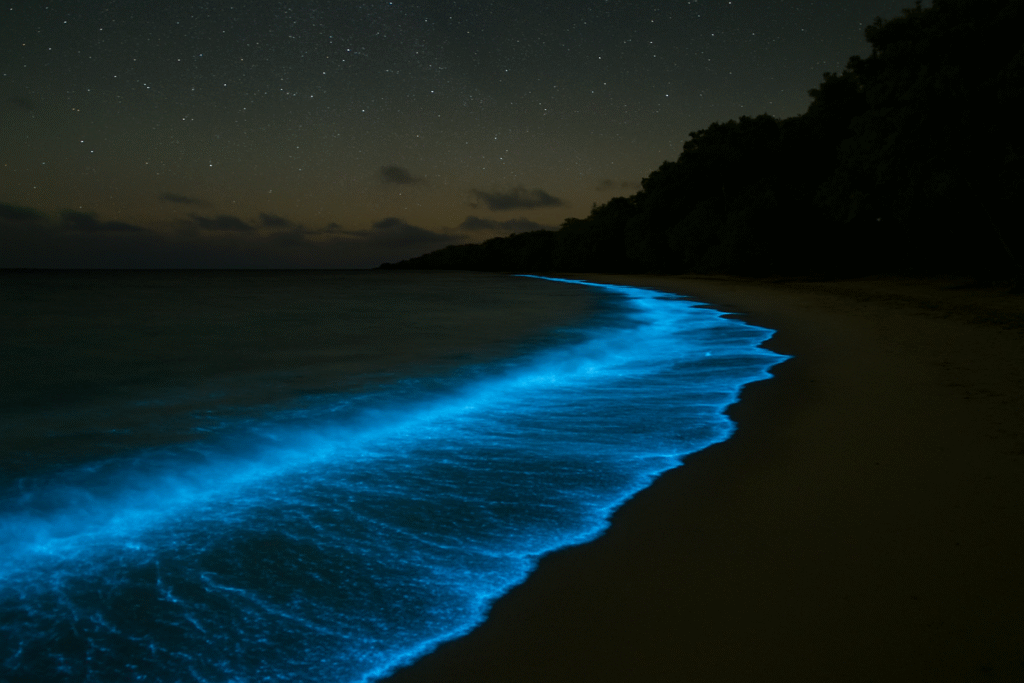
One of the most magical moments of my life happened during a nighttime stroll on Cold Storage Beach in Cape Cod. What I thought would be a romantic walk along the beach turned into something incredible when the sand lit up beneath me with every step. I hadn’t realized when planning the trip that this stretch of shoreline occasionally experiences bioluminescence, a glow produced when tiny marine organisms, often algae, react to movement. Every step I took sparked a shimmering glow in the sand. Inspired by this phenomenon, I’ve rounded up a list of the best places in the world to see bioluminescent beaches and bays.
Mosquito Bay, Vieques, Puerto Rico
Although the name Mosquito Bay may not exactly entice you into visiting, its home to one of the most famous bioluminescent bays in the world. Unfortunately, it’s popularity has led to periods where the bay’s bioluminescence has dimmed, but efforts to preserve this national treasure have helped bring the vibrancy back. There are strict rules for tourists visiting (no swimming, no bug spray or lotions, and no visiting along) to keep the magic alive.
Book a glass-bottomed kayak tour for the best way to explore Mosquito Bay. With every dip of your paddle, the waters will explode with sparkles around you.
Luminous Lagoon, Falmouth, Jamaica
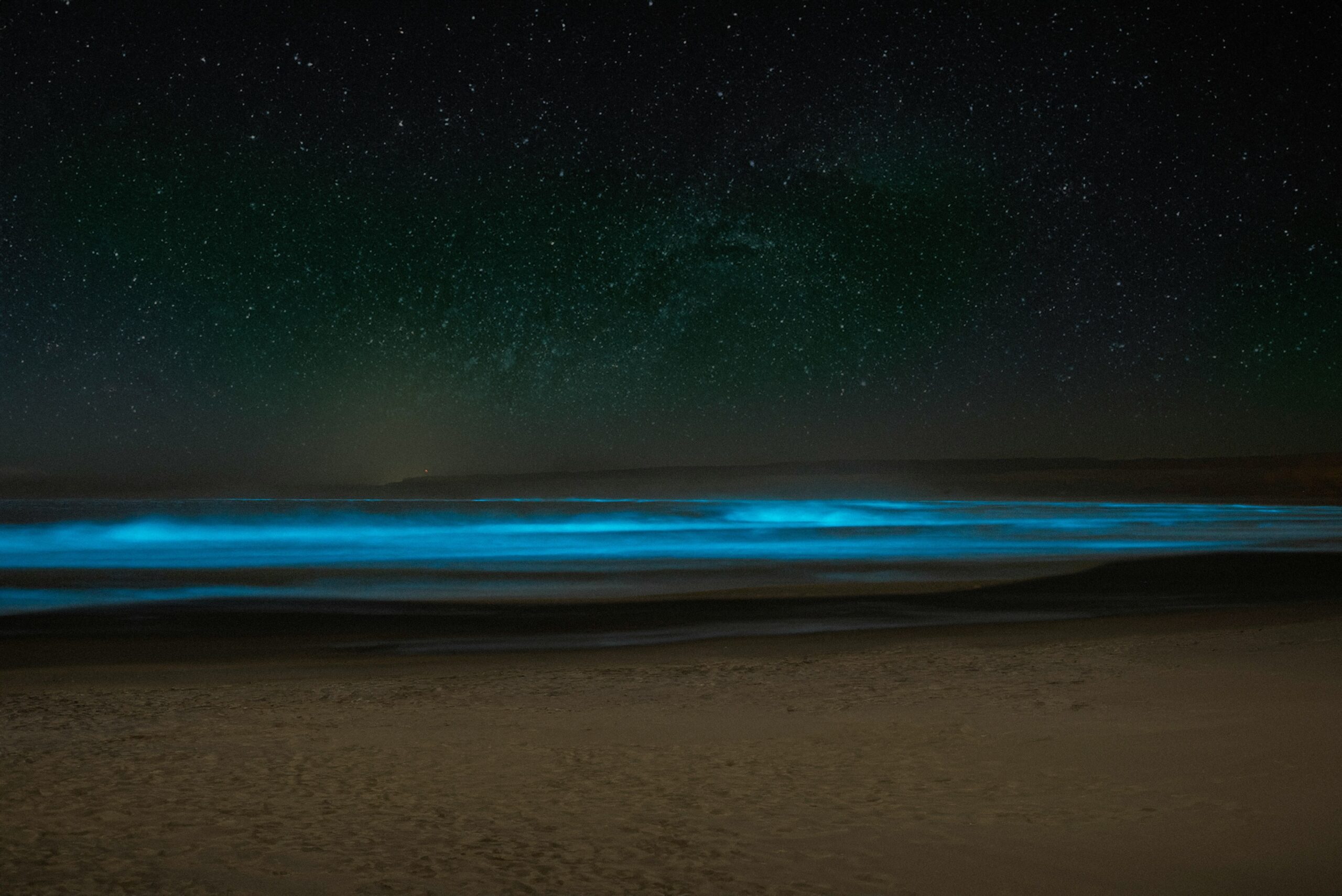
If you’re looking for a bioluminescent bay that you can swim in, head to the Luminous Lagoon in Jamaica. Boat tours take visitors out to the area with the most brilliance, where you can swim in the shallow waters. Every stroke of the water will leave a trail of light in your wake, as this is one of the most vibrant bioluminescent spots in the world.
Halong Bay, Vietnam
The iconic image of Halong Bay is brilliant green waters beneath towering limestone pillars. But most visitors miss the Bay’s after dark of bioluminescence. To see the phenomenon, you’ll have to get away from the polluted main area. Head into the more rural and less-touristy parts of Halong Bay. (Bioluminescence tours of Halong Bay are bookable to help get you to these under-the-radar spots.) You’ll have the best chance of spotting the nighttime glow in May through August, when the warm waters create ideal conditions for the plankton to grow.
Timing your trip for new moon or no-moon days when the nights are darker will also help the lights of the bay shine brighter.
Toyama Bay, Japan
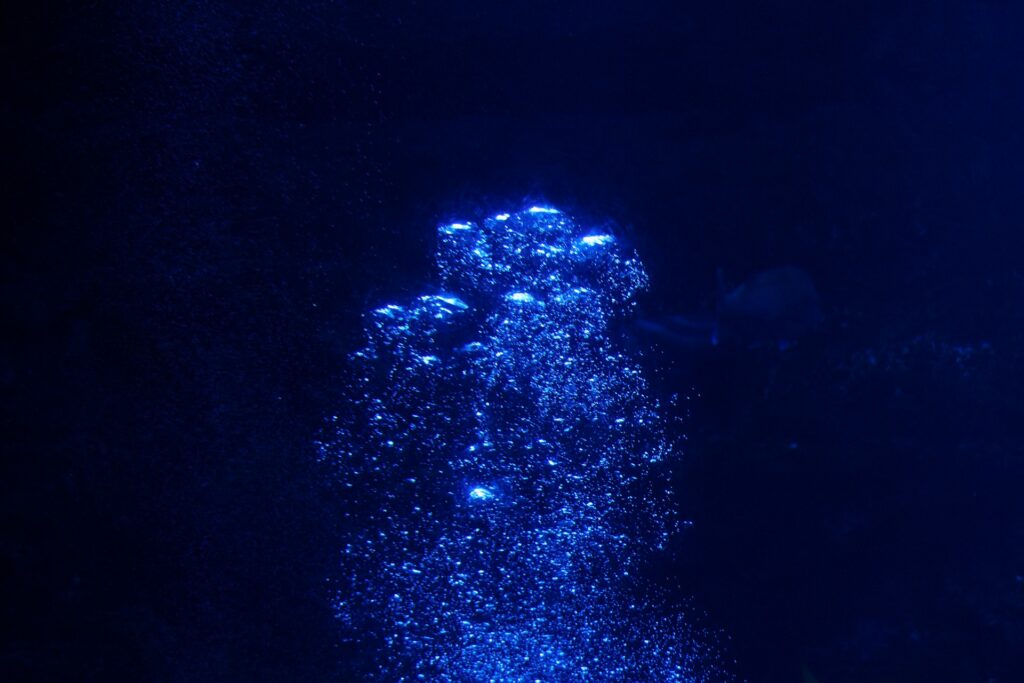
Toyama Bay’s glow comes not from algae, but from firefly squid. Measuring only a few inches long, the squids’ tentacles have tiny photophores, light-producing at the tips, that light up to produce a blue bioluminescence.
Toyama Bay, along Japan’s northern coast, is one of the few places where these squid gather in extraordinary numbers. They normally live far below the surface, but a current funnels them upward each spring, concentrating them so densely that the water can appear to shimmer with blue light. Fishing boats working the seasonal harvest from March to June sometimes haul up nets so full that the deck glows when the squid spill out.
Visitors don’t need to join the fishermen to see the display. Sightseeing boats leave from the port in Namerikawa around 3 a.m., heading a short distance offshore to watch the nets pulled from the water.
The Space Coast, Florida, USA
This 156-mile corridor along Florida known as The Space Coast is home to glowing dinoflagellates and comb jellyfish that light up like aquatic lanterns. The waters of Mosquito Lagoon, Banana River, and Indian River Lagoon sparkle with bioluminescence in June through October.
Book a kayak tour to paddle through the mangroves while you search for fish in the blue-lit waters.
Manasquan Beach, New Jersey, USA
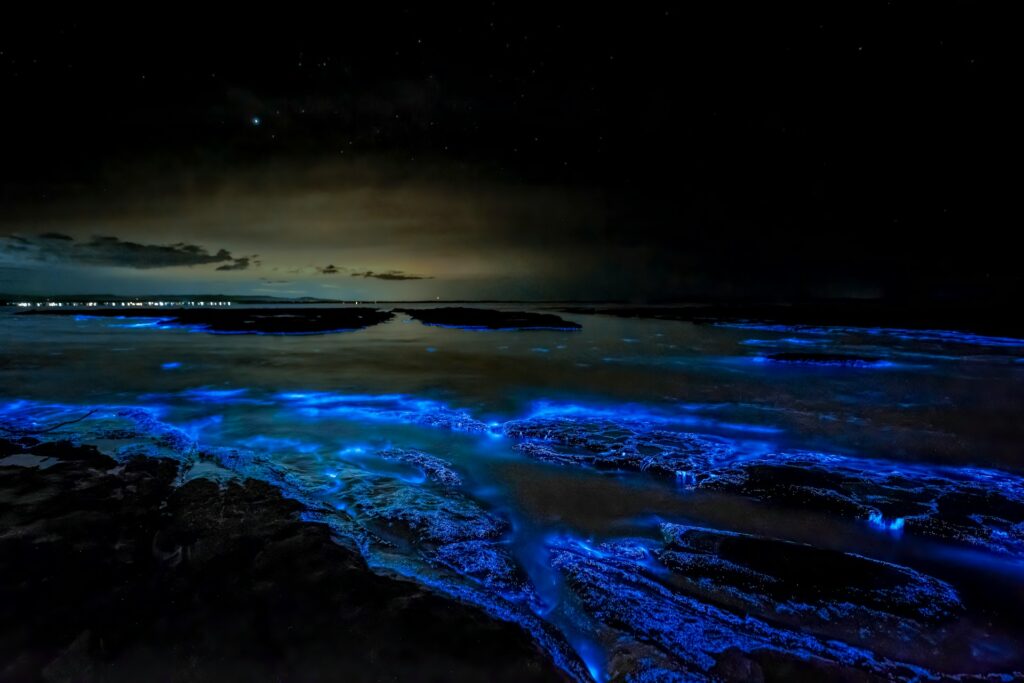
If you’re lucky, you can sometimes witness bioluminescence on the Jersey Shore. The bioluminescent plankton in the water sometimes cause a unique reaction called red tide. At night, when the plankton are most active, it sometimes causes the water to glow blue when disturbed. The phenomenon occurs infrequently during the summer, but keep your eye out if you’re in the area.
Vaadhoo Island, Maldives
After particularly warm, calm days, the surf along this tiny island in the Raa Atoll begins to pulse with points of blue light, a phenomenon locals call the Sea of Stars. The glow tends to appear unpredictably, but the best chance of seeing it is during late summer and early autumn, when conditions are most favorable.
Matsu Islands, Taiwan
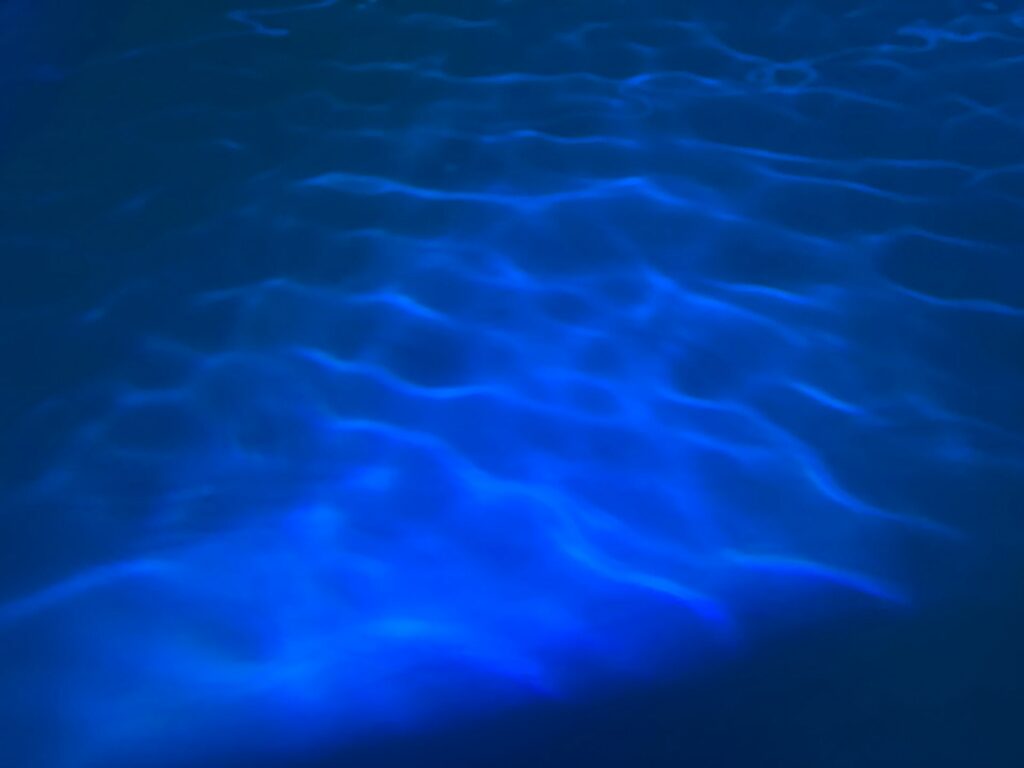
Far off Taiwan’s northern coast, the Matsu Islands experience their own version of bioluminescence known as “Blue Tears.” From April through August, plankton concentrate along the shorelines, lighting up when the currents shift or when boats pass through the water. The glow here is softer than in the Caribbean or Maldives, but it’s striking in its own way, especially when it stretches across an entire cove.
Several villages organize nighttime excursions, though many visitors simply wander the waterfront and wait for the tide to do the work.
Gippsland Lakes, Victoria, Australia
Gippsland Lakes is one of the few places in the world where bioluminescence appears inland as well as along the coast. The lakes occasionally ignite in brilliant blue swirls, the result of large blooms of Noctiluca scintillans. When the glow is especially intense, the shoreline can look as if it has been edged in neon. Sightings tend to happen after long stretches of warm weather, particularly in the summer months, and kayakers often have the best vantage point, paddling slowly through the illuminated shallows.
Tips for Experiencing Bioluminescence
- Plan around the moon. Bioluminescence is brightest when there’s no moonlight.
- Move gently. Every splash, every paddle stroke, lights up the water — but too frantic, and you risk dispersing the glow.
- Go with guides. For most of these spots (especially Mosquito Bay), guided tours are required to protect the waters.
- Respect the ecosystem. No sunscreen that washes off, no insect repellent, and definitely no litter.
